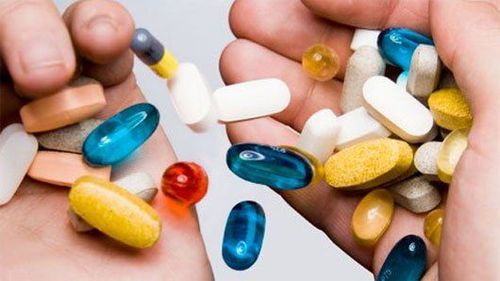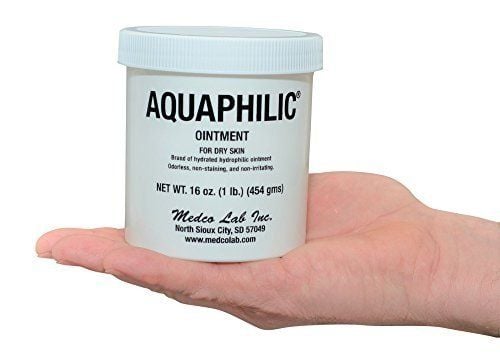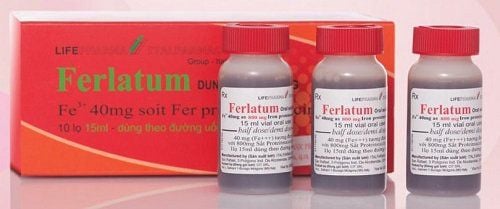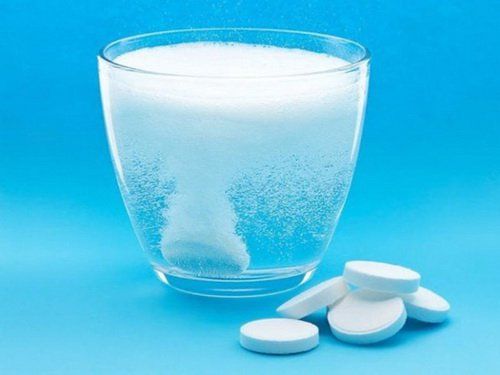This is an automatically translated article.
The article is professionally consulted by Specialist Doctor II Tran Thi Mai Huong - Department of Obstetrics and Gynecology - Vinmec Hai Phong International General Hospital
Folic acid is one of the B vitamins, which plays an important role in the production of blood cells and the development of the neural tube. Folic acid deficiency will seriously affect human health, especially pregnant women and the normal development of the fetus. So what foods is folic acid in?
1. What is folic acid?
Folic acid, also known as folate or vitamin B9. Folic acid is one of the 13 vitamins that need to be provided daily for the body (including 4 fat-soluble vitamins A, D, E, K, vitamin C and 8 water-soluble B vitamins, B group folic acid is a soluble vitamin group. in water), folic acid is an essential substance that contributes to normal red blood cell formation and affects the synthesis of DNA and RNA, which is closely related to the process of cell division and replication.Folic acid deficiency leads to megaloblastic anemia. If a pregnant woman does not get enough folic acid, it will lead to a defect in the formation of the fetal spinal canal, which puts the fetus at risk of spina bifida. In addition, women of childbearing age lacking folic acid are more prone to anemia and iron deficiency than men because their iron stores are low due to blood loss during menstruation. Non-pregnant women should pay attention to the risk factors promoting iron deficiency anemia and folic acid deficiency such as: prolonged bleeding, heavy bleeding during menstruation, excessive diet (sometimes because of phobias) fat). If you have this type of anemia, women will feel tired often, reduce physical activity, lose memory...
In pregnant women, the need for folic acid increases 4 times more than before. pregnant. Folic acid deficiency in pregnant women can cause neural tube defects in the fetus. Nutritionists recommend that all women who are pregnant or planning to become pregnant must start taking folic acid supplements 3 months before the time of planning to become pregnant. It is essential to ensure that the daily diet has enough 400g of folic acid.
2. Folic acid is found in which foods?
Broccoli, cauliflower, cabbage:
Broccoli, cabbage, cauliflower are the top food groups. On average, 1/2 cup gives us 51mg of folic acid. Broccoli, cauliflower, cabbage are very suitable for folic acid supplements because it is easy to eat, easy to digest, does not cause side effects and is readily available. This food group also provides many other basic nutrients. Therefore, the culinary and nutrition world recommends adding to the daily menu according to each person's preferences.
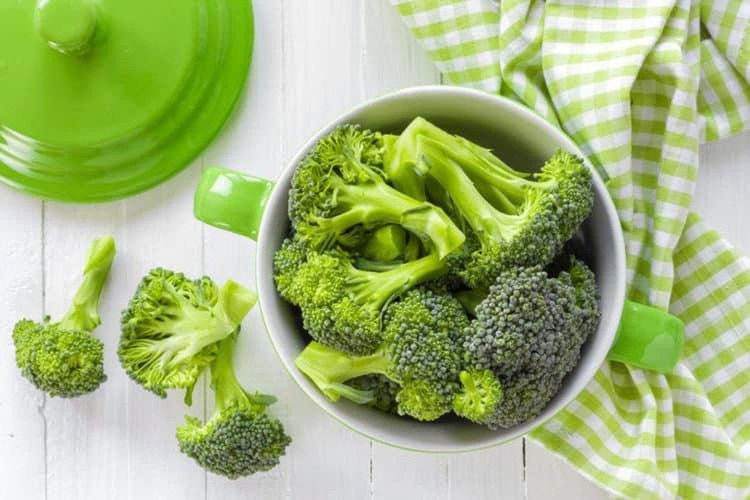
Mushrooms: Mushrooms are generally considered to be a rich source of nutrients such as folic acid, protein, vitamins, minerals, amino acids, antioxidants and antibiotics. Mushrooms contain calcium, potassium, iron, vitamin D, copper, and selenium. In addition, mushrooms are also low in fat, cholesterol, and carbohydrates, so they are very suitable for pregnant women. It has the effect of reducing blood fat (cholesterol), limiting breast cancer in women and prostate cancer in men, and enhancing the health of the immune system. People can eat mushrooms regularly as soups, salads, stir-fries, stews or as appetizers. Although delicious, using mushrooms requires experience to prevent poisoning incidents.
Bell peppers: A food rich in folate and folic acid. A small bowl of 92g raw bell peppers provides the body with 10.5% of the daily folic acid requirement. In addition, bell peppers are rich in vitamins B1, C, B6, manganese, potassium, fiber, tryptophan and other antioxidants. Bell peppers come in a variety of colors, are usually sweet, easy to consume, have an aromatic flavor and can be processed into many dishes, like vegetables, can be eaten raw or prepared according to individual preferences.
Beans and legumes: Very diverse such as lentils, peas, white beans, soybeans, peas, Lima beans... are rich in folic acid and are a good source of protein and useful minerals. for body. On average, a bowl or 30g of canned beans provides 8% of the body's daily folic acid needs. 1/2 cup of boiled beans provides about 12% of the body's daily folic acid needs. In particular, this food group is very safe for the elderly, including vegetarians and non-vegetarians.
Parsley not only adds flavor to food, but also has a lot of great advantages to provide nutrients to the body, especially folic acid, antioxidants such as luteolin, vitamin C, vitamin A and many more. trace elements anti-cancer, anti-inflammatory and enhance the health of the immune system. Because of this benefit, parsley is classified as a very good food group for human health, leaving no bad effects.
Fruits and fruit juices: Many groups of green vegetables and fruits are beneficial to human health, including folic acid nutrients such as bananas, watermelons, lemons, oranges, grapefruits, berries, and tomatoes. sour. Can be fresh or canned. This is an available food group, rich in folic acid and suitable for the elderly group, should be eaten daily. In case you do not like to eat tomatoes, you should replace them with another group of fruits to supplement the necessary folic acid every day for the body.
Lettuce, lettuce: According to research, a serving of lettuce, lettuce (about 80g) provides the body with 16% of the daily requirement of folic acid. In addition to lettuce folic acid, lettuce is also rich in nutrients such as protein, vitamins A, K, C and manganese, magnesium, calcium, iron, potassium, fiber and zinc, absolutely no cholesterol, so it has the effect of reducing stroke. heart disease and high blood pressure, ideal for the elderly group. However, to bring the highest benefits, you should choose safe food, cultivated by organic methods.
A serving of lettuce, salad (about 80g) provides the body with 16% of folic acid needs per day
Fortified granular food group: Fortified cereal products are a group rich in folic acid, a good source of folic acid. Folic acid is mainly for humans during the day. Very diverse such as pasta, cereals, breads, cereals for the morning. Can satisfy 25% to 100% of the body's folic acid needs. In addition, this is also a safe powdered food group, with very few incidents for the elderly and pregnant women.
Pregnant milk: Especially for pregnant women, besides a diet rich in folic acid, pregnant women can also increase the amount of folic acid naturally through drinking milk during pregnancy. There are many reputable brands of pregnant milk on the market for you to choose from, and usually, manufacturers will calculate carefully so that when you mix a glass of milk in the right ratio, you can add 150-200. mcg of folic acid into the body.
Using functional foods such as: Elevit, Blackmores, Prenatal DHA, Pregnacare or Procare will be a great choice if pregnant women want to promptly supplement a large amount of folic acid with many other necessary vitamins and minerals. body during the "trimester" period. However, you should note that you should take the medicine as directed by your doctor, if you see any side effects such as nausea, increased morning sickness, or constipation, you should ask your doctor for advice on changing other drugs that are suitable for you.
3. Note when using folic acid
Avoid taking the medication in larger doses or for longer than indicated. Folic acid should be taken with plenty of water. If taking folic acid and iron containing drugs, do not drink with tea (tea) but should drink with boiled and cooled water (because tea interferes with iron absorption). Do not take with antacids while treating peptic ulcer with folic acid and iron containing drugs (iron is not absorbed), do not take folic acid with tetracycline antibiotics (tetracycline is reduced absorption). ). It should be noted that after taking folic acid and iron containing drugs, the stools are black (due to the color of the iron contained in the drug, this is not a sign of concern). You need to go to the hospital for examination to determine the anemia and folic acid deficiency status and take folic acid medicine exactly as prescribed by your doctor.Please dial HOTLINE for more information or register for an appointment HERE. Download MyVinmec app to make appointments faster and to manage your bookings easily.
Article referenced source: National Institute of Nutrition




